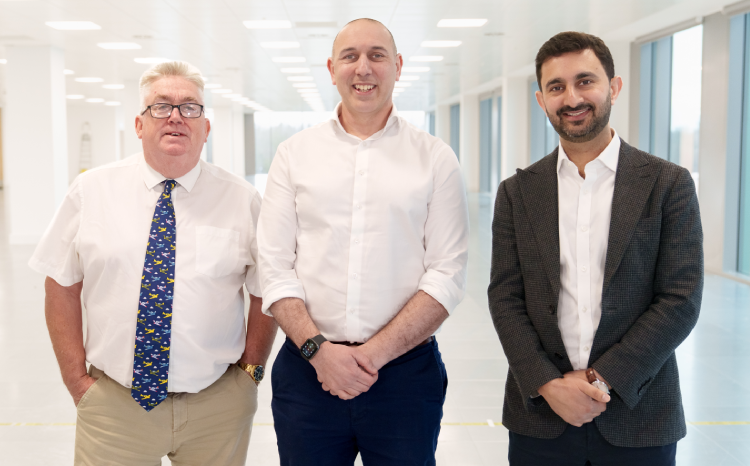Going to the end of the line
- 6 May 2015

When the ‘Safer Hospitals, Safer Wards: Technology Fund’ was announced by the government in May 2013, one its main priorities was to support the implementation of electronic prescribing at NHS trusts in England.
At the time, Professor Sir Bruce Keogh, medical director of NHS England, said: “Expanding the use of electronic prescribing by doctors and nurses in hospitals will help the NHS saves lives and save money.”
More than 50 e-prescribing projects were among the recipients of the £260 million pot when the final funding was announced. But one trust missing from the list was King's College Hospital NHS Foundation Trust.
By the time the tech fund awards were announced, it had already completed the implementation of its own, self-developed e-prescribing and medicines administration system, across its adult and paediatric wards.
Ten years of learning what works
Its e-prescribing roll-out made King’s a digital pioneer, and has contributed significantly to its place at the top of Digital Health Intelligence’s Clinical Digital Maturity Index.
The journey was neither quick nor easy though, as Ben Fidler, the trust’s team leader in EPMA, explained at a recent Health CIO Network / CCIO Leaders Network best practice event at King's College Hospital in Denmark Hill.
The trust first planned to implement EPMA more than ten years ago, linking this functionality to its iSoft patient administration system.
However, a pilot started in 2004 was cut short after just six months because, for an unknown reason, drugs just stopped scheduling and fell off the drug chart, posing a significant safety risk.
It took four years before the bug was fixed and the trust was ready to try again, with Fidler’s team attempting another pilot in November 2008.
This also proved problematic; although Fidler says the project started with "one of the worst types of ward we could have chosen.”
“As a medical admissions ward, it was one of the busiest,” he said. “It had the highest turnover of patients, lots of visiting teams, and all types of medication.”
This led to strained relationships. “2009 appeared and the revolt started,” Fidler said. Doctors put together a questionnaire asking why the EPMA was causing so many problems and why it was being seen as more difficult and less safe than paper.
The responses included the time it took to use, and the difficulty with using it for some types of drug, particularly fluids, such as insulin.
Rather than be discouraged, the feedback prompted the EPMA team to work on improving the system.
“We made it loads better,” said Fidler, adding that the idea of starting with the medical admissions ward had been that "if it can work there, it can work anywhere" and after those six months of hard work "it finally did."
The team chose a quieter, elderly care ward for its second roll-out, in June 2009. “It was a much easier deployment,” said Fidler. “So we thought ‘EPMA does work’ – we had no revolt on that ward.”
Infrastructure matters
There were still any number of practical problems to overcome, however. Indeed, the practicalities of accessing the system became as much of a focus for the IT team as the system itself.
Fidler described how the team had to walk around with a computer on wheels, listening for a continuous ping in order to test the wi-fi service across wards. Access points also proved a problem, with the EPR dropping every time someone moved to a new plug socket.
In addition, the hardware proved problematic, with the trust going through multiple versions of drug trolleys and mobile computers before deciding on an appropriate access device.
Interestingly, the trust decided against the use of tablet computers, due to problems with typing in information. “They’re great to view but not to do,” said Fidler.
By 2010, the trust was administering 100,000 doses a month using its system, but the amount of data led to more niggling problems.
For instance, a lag on the system meant it took five to ten minutes from the drug being ordered to it appearing on the drug chart.
This forced to trust to halt the roll-out again. It took the system down in some wards until iSoft issued an emergency software release for iPM that helped to fix the issue.
After that, the team was finally able to roll-out the system at a rate of two wards a month until all adult wards were covered.
Kids rules, ok?
The next stop was adapting the system so it could be used in paediatric care. The team considered adding a ‘(P)’ after any drug for a paediatric indication, and restricting access to paediatric clinicians.
But in the end, influenced by Twitter, it decided to put a hashtag before any paediatric drug, along with a written warning underneath, differentiating adult and paediatric medicines in any search result.
This innovation helped King’s complete its implementation of EPMA for inpatients at all adult and paediatric wards, except for ICU and A&E, by 2013.
The journey is not over though. The trust is now working on outpatient e-prescribing, while an upgrade in the summer will add a clinical decision support feature to the EPMA.
Crucially, the trust is also looking to deliver the system at Princess Royal University Hospital, which it took over in 2013, and which is currently undergoing a “very difficult” implementation of the iSoft PAS and the electronic patient record systems built on it.
Diabetes shows the value
Fidler is also keen to make use of the five years’ of data King’s has built up to work out whether e-prescribing actually makes a difference to patient outcomes.
One area where it has demonstrated success is diabetes, where the use of e-prescribing has taken out a lot of the potential for human error.
Omar Mustafa, consultant in diabetes at King's College Hospital, told the CCIO/CIO audience: “What IT has enabled us to do is to standardise the prescribing. With one design, we got rid of a lot of never-events that are recorded nationally: using ‘u’ for units, illegible prescriptions and ambiguity in prescriptions.
“If you get a problem with prescribing, dispensing or administration, the risk of harm to the patient is exponential. We saw that when we analysed all adverse incidents related to insulin, for example.”
He explained that e-prescribing had meant the trust was able to standardise all instructions for diabetes prescribing, and there was set criteria everyone could use. “We’ve removed the margin of error for a lot of things.”
E-prescribing also allowed diabetologists to view the relationship between insulin use and glucose levels in the EPR. “That’s very important to us because uncoupling those things would be a nightmare. You can get things like trends of blood glucose.”
Time to learn from the pioneers
If the CCIO/CIO visit demonstrated one thing, it was that King’s College Hospital is far from alone in its struggles with e-prescribing.
Christine Walters, director of IM&T at the Pennine Acute Hospitals NHS Trust, told Fidler his trust’s experience mirrored hers during her time as director of IT at Salford Royal NHS Foundation Trust.
“We went through sometimes the exact same things. Every one you went through. We actually had to bring people over from America in the end.”
Although the second round of ‘Integrated Digital Care Technology Fund’ money supported just two, additional e-prescribing projects, the initial batch of 50+ are on their way.
Trusts implementing these systems may well be advised to look at what trendsetters such as King’s College Hospital have achieved, in order to help with their own journeys.




